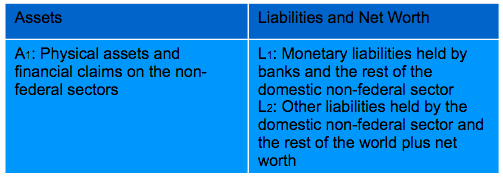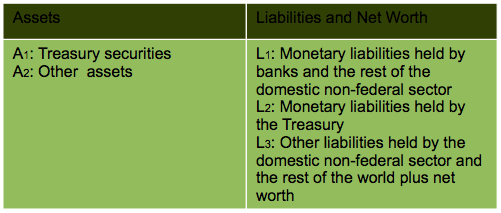Levy Economics Institute of Bard College's Working Paper No. 778, Modern Money Theory 101: A Reply to Critics, explores several interesting institutional and theoretical insights provided by Modern Money Theory (MMT) -- such as the balance sheet implications of Treasury and central bank operations:
-
"Monetarily sovereign governments have a very flexible policy space that is unencumbered by hard financial constraints."
-
"Monetarily sovereign governments (those that issue their own currency) are always solvent and can afford to buy anything for sale in their domestic unit of account even though they may face inflationary and political constraints."

Treasury spending always involves monetary creation as private bank accounts are credited, while taxation involves monetary destruction as bank accounts are debited. The question becomes how the Treasury acquired the deposits it has in its account at the central bank. In the current institutional framework, the apparent answer is through taxation and bond offerings. While usually economists stop here, MMT goes one step further and wonders where the receipts of taxation and bond purchases came from; the answer is from the central bank. This must be the case because taxes and bond offerings drain CB currency so the central bank had to provide the funds (as it is the only source). The logical conclusion is then that CB currency injection has to come before taxes and bond offerings. Close study of the operations involved reveals that the CB either advances them, or more commonly, provides them through open market purchases. More broadly, the theoretical insight that MMT draws is that government spending (by the Treasury or spending and lending by the central bank) must come first, i.e. it must come before taxes or bond offerings. Spending is done through monetary creation ex-nihilo in the same way a bank lends (buying financial assets) by crediting bank accounts; taxes and bond offerings lead to monetary destruction (L1 goes down) in the same way that loan repayments destroy bank deposits.

As Modern Money Theory (MMT) demonstrates:
We'll never have to worry about the financial insolvency of Social Security or Medicare.
We have nothing to fear, financially, in eliminating the debt ceiling or in empowering the central bank to directly fund the Treasury.
Politicians and others speak nonsense when insisting that the government can't afford to spend its own currency for any desired purpose -- including defense expenditures, infrastructure upgrades and maintenance, investment projects, universal healthcare, full-employment job guarantee programs, education support, unrestricted state/local grants, etc., etc., etc.
Citizens, as well as policy makers, may benefit by considering more closely the economic/financial/political advantages of combining the Treasury and central bank into a government sector rather than complaining (wrongly, according to MMT) that their sovereign government borrows from China to place an unconscionable debt burden on their children and grandchildren, runs federal budget deficits that rob from the nation's savings and continues to do very little about fixing an unsustainable trade deficit that kills domestic jobs.